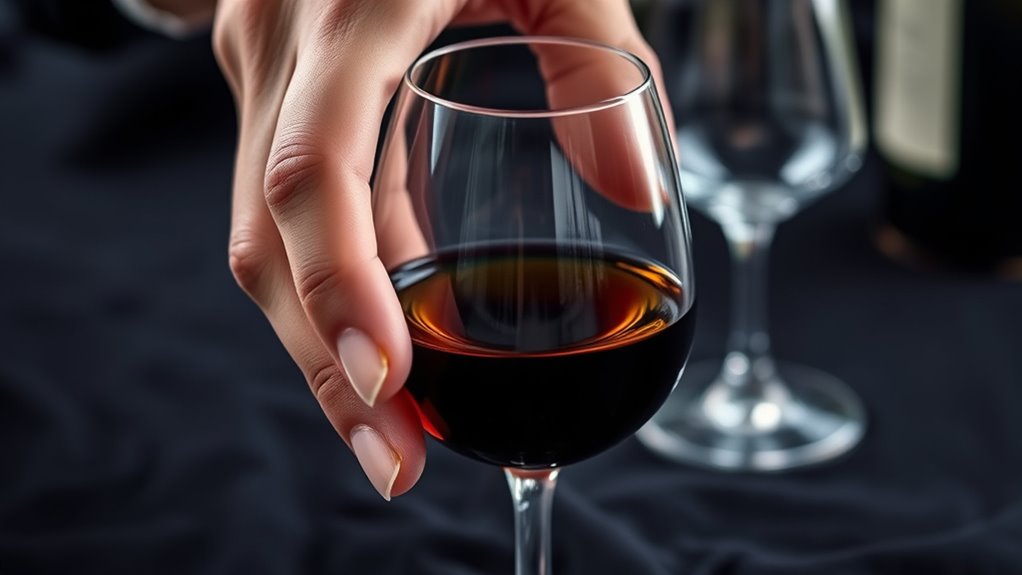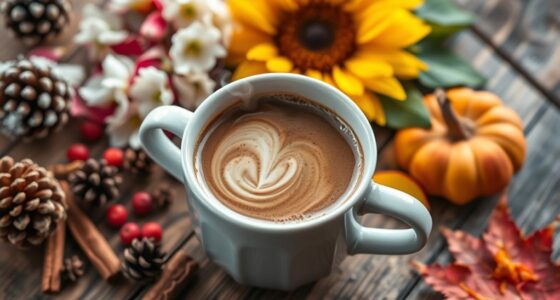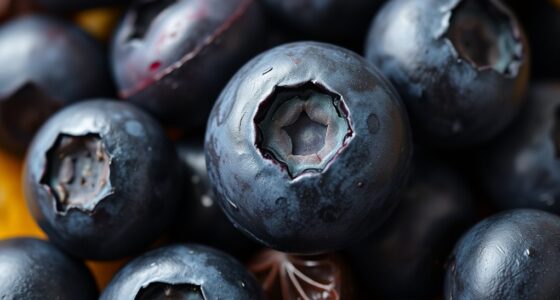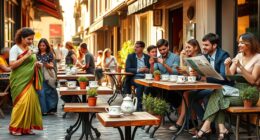Blind tasting is a great way to test and sharpen your wine skills by focusing solely on sensory perception. You evaluate appearance, aroma, taste, and finish without knowing the wine’s identity, helping you develop objective judgment and recognize subtle nuances. Repeated practice, especially with benchmark wines, boosts your confidence and enhances your ability to distinguish different styles and regions. Keep exploring, and you’ll discover even more techniques to elevate your tasting expertise.
Key Takeaways
- Use structured tasting grids to systematically evaluate appearance, aroma, taste, and finish for accurate assessment.
- Practice regularly with benchmark wines to improve recognition of styles and regional characteristics.
- Focus solely on sensory cues, ignoring labels or external factors to reduce bias and enhance objectivity.
- Develop your palate by comparing wines side-by-side, sharpening detection of subtle aromas and flavors.
- Track and analyze your tasting notes over time to identify patterns and improve your wine identification skills.
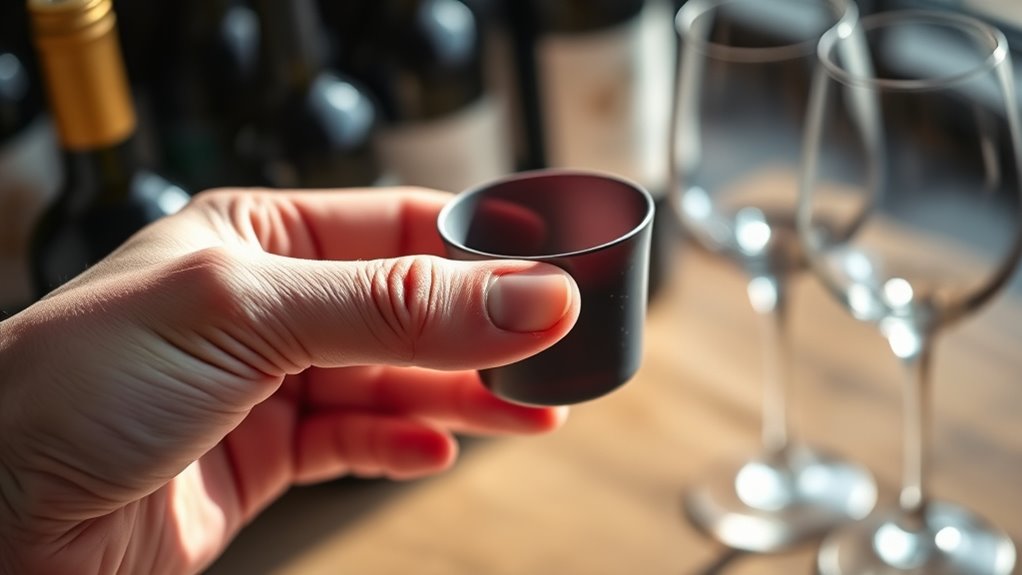
Have you ever wondered how sommeliers identify wines so accurately? It all comes down to their refined tasting skills and the power of blind tasting.
When you participate in a blind tasting, you evaluate wine without knowing its identity, which forces you to rely solely on your sensory perception. This approach sharpens your palate and enhances your ability to detect subtle aromas, flavors, and visual clues that reveal a wine’s grape variety, region, or style. By focusing on what your senses tell you rather than any preconceived notions, you develop a more objective evaluation of each wine.
Engaging in comparative tastings allows you to distinguish between different wines more effectively. When you taste multiple wines side by side, you start to notice nuances that might go unnoticed when tasting in isolation. To maximize your accuracy, it’s helpful to use a systematic method or tasting grid. These tools guide you through a structured process—examining appearance, aroma, taste, and finish—helping you stay consistent and avoid bias.
Over time, this method becomes second nature, leading to more precise wine identification. Practicing with classic wines, those with well-known profiles from renowned wine regions, is particularly beneficial. These benchmark wines serve as your reference points, enabling you to recognize characteristic traits and build your confidence.
As you repeatedly encounter these familiar wines in blind tastings, your ability to identify similar styles and regions improves remarkably. This consistent practice nurtures your tasting skills and deepens your understanding of how different factors influence a wine’s profile.
Blind tasting also emphasizes objective evaluation. Without the influence of labels, reputation, or price, you learn to focus purely on sensory details. This reduces bias and helps you develop a more honest assessment of each wine’s qualities.
Over time, your tasting skills become more refined, allowing you to recognize wines more accurately and with greater confidence. Whether you’re a budding enthusiast or a professional, integrating blind tastings into your routine is an effective way to elevate your wine knowledge and appreciation.
Frequently Asked Questions
What Is the Blind Taste Test Method?
The blind taste test method challenges you to evaluate wines without labels or packaging, helping you focus solely on sensory details. You rely on sight, smell, taste, and texture to gather clues, often with wines presented randomly to prevent bias.
Use structured notes and scorecards to record impressions of aroma, flavor, acidity, tannins, and finish. This process sharpens your palate and improves your ability to identify and assess wines objectively.
What Is the Blind Tasting Method?
The blind tasting method involves evaluating wine without knowing its label, origin, or price to avoid bias. You rely on your senses—appearance, aroma, taste, and texture—to analyze and identify key characteristics objectively.
Using structured tools like note sheets or grids, you compare wines to recognize patterns, refine your palate, and develop better judgment. This approach helps you stay focused and improve your wine evaluation skills independently of external influences.
What Foods Are Good for a Blind Taste Test?
You should choose foods with distinct flavors and textures for a blind taste test, like sweet chocolates, savory cheeses, or spicy snacks.
Incorporate a variety of categories such as salty, sweet, sour, and umami to challenge your palate.
Pick easy-to-handle, mess-free items from different cuisines, like Japanese wasabi or Italian balsamic.
Use unmarked containers to keep visual cues hidden and focus entirely on taste.
How Do You Practice Blind Tasting?
To practice blind tasting, start by selecting a variety of wines and tasting them without knowing the labels. Focus on observing appearance, nose, and palate, noting your impressions carefully.
Use systematic methods to analyze each wine objectively. Record your notes and compare them over time to track your progress.
Practice with friends or in groups to gain different perspectives, and try different formats like lineups or themed flights to sharpen your skills.
Conclusion
Now that you’ve experienced a blind tasting, you can really appreciate the nuances of different flavors without bias. Trust your senses and sharpen your palate by practicing regularly. Remember, every tasting is a learning opportunity—so stay curious and keep experimenting. The more you challenge yourself, the better you’ll become at identifying subtle differences. So go ahead, host a tasting session, and enjoy discovering new favorites. Your taste buds will thank you!
